Genre: Fighting Developer: Gaibrain Publisher: Sega Enterprises Players: 1-2 Released: 1996
I can only think that the motive behind releasing Virtua Fighter 2 on the Genesis was fan service, perhaps a way for those who had yet to upgrade to the next generation of hardware to feel like they hadn’t been left behind. I can understand that… well, I can at least sympathize with it. After all, anyone who would settle for this version over the incredible Saturn port deserves my sympathy.
Then again, maybe not. One need not give it more than a passing glance to see just how much had to be compromised in order to squeeze Yu Suzuki’s magnum opus onto the aging 16-bit hardware. Were the visuals astounding? Yes. Did it look like Virtua Fighter 2? Sort of. Did it play the same? Well, yes and no. That last little detail right there, no matter how much justification was given, was the chink in an otherwise fun game’s armor, the red stain on an otherwise impeccable white shirt. Sega biggest achievement here was that they showed us how late ports of games much too powerful for the hardware are all too quickly forgotten.
But it’s so easy to be swayed by Virtua Fighter 2! The brand is pretty popular in America, though nowhere near as much as in its native Japan, and it probably peaked more than a few people’s curiosity to see that box in the Genesis section at their local retailer. The game was tearing up the arcades at the time, and Sega made a superhuman effort to bring as much of the original’s seamless animation and detailed graphics home to their brand-spanking new Saturn, which was thirsting for quality software. A fighter of this quality and depth was hard to come by on a home console, and its basic, three-button scheme lulled gamers into a false sense of security. Hey, if it looked this good and had half the buttons of Street Fighter, it had to be simple, right? Several minutes and one mean Akira beat-down later, it became painfully apparent that looks were indeed deceiving. Few, if any brawlers have ever been as deep as the Virtua Fighter series, and it takes more than a button-mashing monkey to really get anywhere in them.
That’s the first thing that probably had die-hard fans backing away with distaste. Since everything lost a dimension in the conversion process, much of what made Virtua Fighter 2 so much fun was seemingly gone as well. Both of the new characters, Shun-Di and Lion, were removed, and you were left with only the original eight fighters for combat. Also, most combos and a few special moves were missing. This might not have been enough to warrant a complete boycott, as the game was in fact very playable, even in this new, light repackaging.
For that reason, we have to give credit where credit is due. Even stripped down, Virtua Fighter 2 on the Genesis was still capable of keeping you interested. The famous, fluid animation was still there (who said sprites were dead!), and the colors and overall presentation were fantastic. The floor had that neat warping effect, a la Street Fighter II, and the overall feel of the game came across relatively unscathed. In the shadows of the 32-bit consoles, this was unfortunately unnoticed, and that’s a shame. Virtua Fighter 2 remains a solid reminder of just how much could be attained visually on the Genesis, and I often wonder at what else could have been done, had Nakayama and SOJ allowed the console another year of life.
Generally speaking, it wouldn’t be too much of a stretch to say that the entire presentation was on par with the gameplay. From the narrator’s clear voice to the stirring renditions of the famous character themes, Virtua Fighter 2 shines aurally for a Genesis title. I’d even go so far as to put it up a notch over the 32X version of the first game. It sounds that good.
Even more impressive was the fact just how competent the combat engine was, a very impressive effort on such dated hardware — seven years old already — and I doubt it could have been done any better without the use of some special chip. One question that does come to mind is: why didn’t they decide to use the SVP chip from Virtua Racing? Even if Sega wasn’t going to go fully polygonal I bet it could have helped keep all the moves and characters intact. Surely it wouldn’t have run as expensive as VR did, so why not toss it in there? And even if it did jack up the price, I’m left with another, more basic question: why then, even bother?
What we’re looking at here is a game that essentially did everything right for a 16-bit fighter of the time, only the accomplishment came about two years too late. No one was really interested in an eye candy port of one of the most popular next generation fighters, and the Genesis rendition of Virtua Fighter 2 was quickly gobbled up by its 32-bit sibling’s hype. Though an interesting footnote in Genesis history and a prime example of the console’s capabilities, it will forever be remembered as the “other” version. At least it’s a good one.
SCORE: 6 out of 10

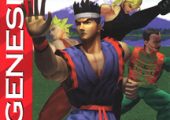
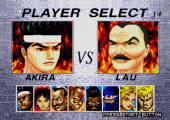
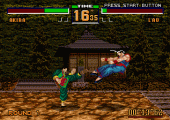
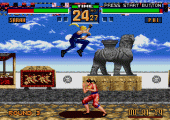
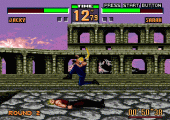
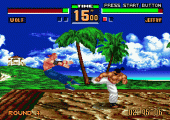
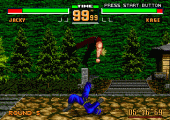
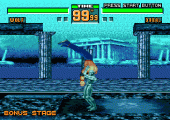
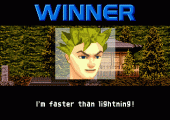
Recent Comments